Amazing Migration: Photos of Sandhill Cranes
Found across the world
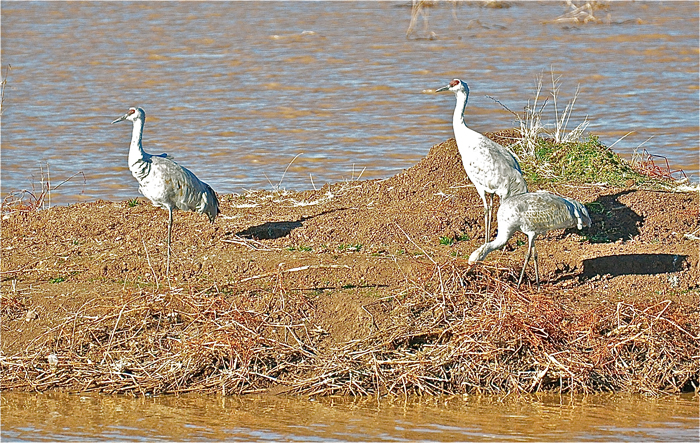
Sandhill Cranes (Grus Canadensis) are large-bodied birds with long legs and tall necks that have a wide distribution over two continents. They are the most common members of the crane family found across the world. Breeding pairs of Sandhill Cranes are found in northeastern Siberia, Canada and the United States. Migratory Sandhill Cranes overwinter from Florida to California with groups traveling as far south as northern Mexico.
A family affair
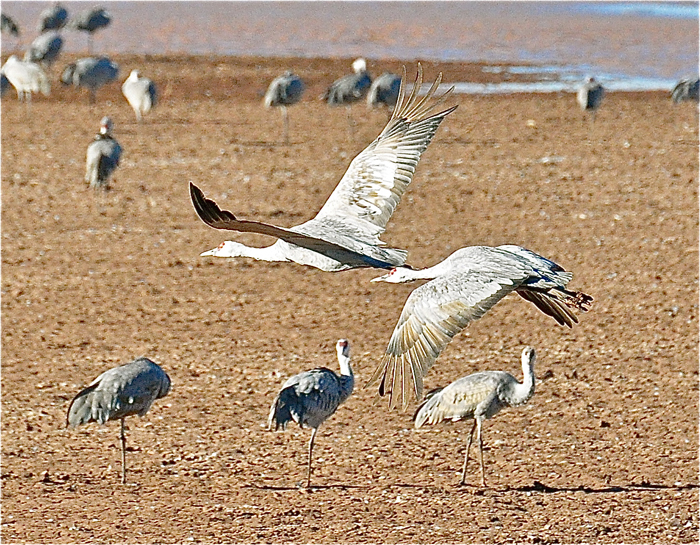
There are three migratory subspecies of Sandhill Cranes. They are the Lesser Sandhill (Grus canadensis Canadensis), the Greater Sandhill (Grus canadensis tabida) and the Canadian Sandhill (Grus canadensis rowani). These migratory species spend the winter in the southern latitudes of North America and return north during the summer to their breeding grounds. There are also three non-migratory subspecies: the Mississippi (Grus canadensis pulla), Cuban (Grus canadensis nesiotes) and Florida, (Grus canadensis pratensis). These three species spend their lifetime in the southeastern part of the United States and in Cuba.
A crown
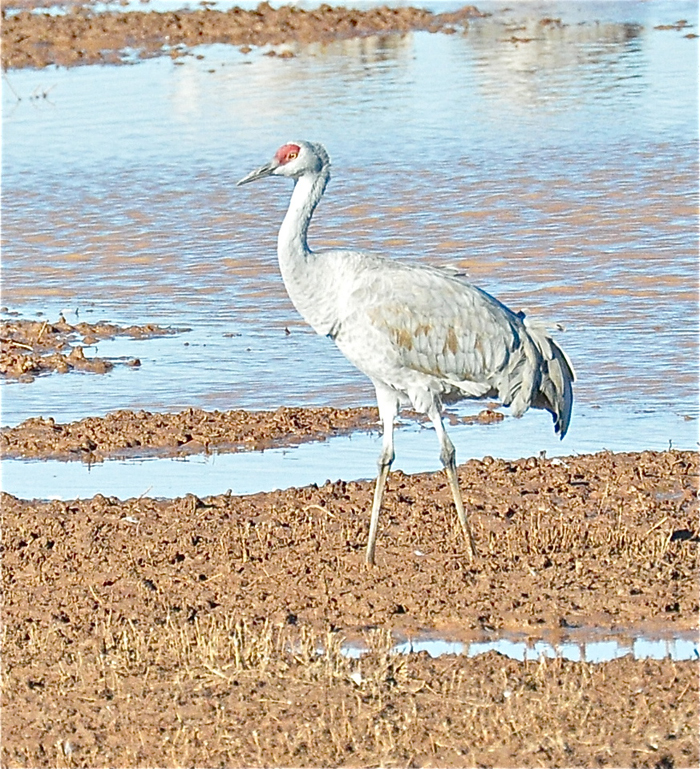
Adult Greater Sandhill Cranes are slate gray in color with a crown of red skin. Their bulky bodies narrow into a long, slender neck and their short tail feathers droop to form a "feathered bustle." Their bills are straight and slightly longer than their heads.
Lightweights
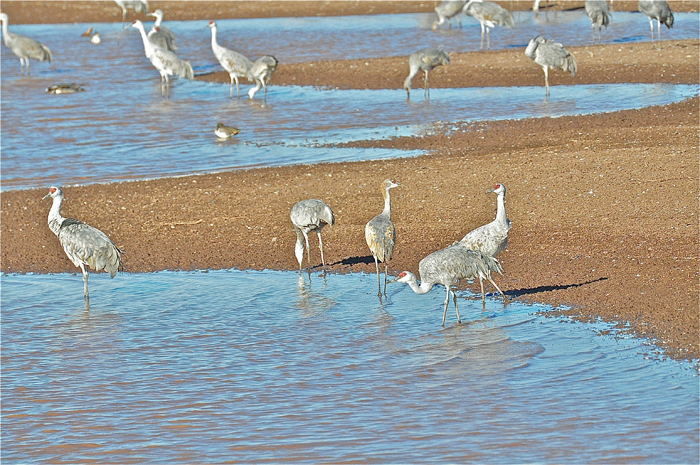
Greater Sandhill Cranes can weigh between 6.5 and 14 lbs. (3 and 6.5 kilograms). Adults have a total body height between 30 and 50 inches (80 and 120 centimeters) with a wingspan of 5 to 6 feet (1.2 to 1.3 meters). Banded Sandhill Cranes have been known to live for as long as 20 years.
Not a picky eater
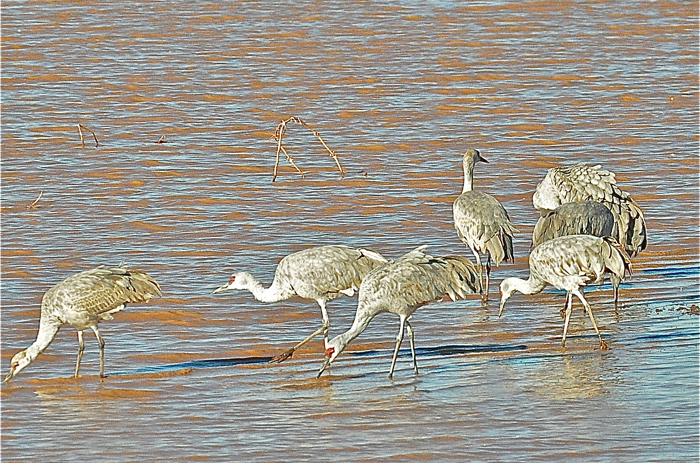
All Sandhill Cranes are omnivores that thrive in freshwater wetlands. They eat most anything they can dig up, including mice, snakes, worms, plants, insects and grains. Flocks of Sandhill Cranes have been known to descend into a field and dig through the soil looking for and eating any available tubers. This crop damaging behavior can make them unwelcome guests for local farmers.
Movers and shakers
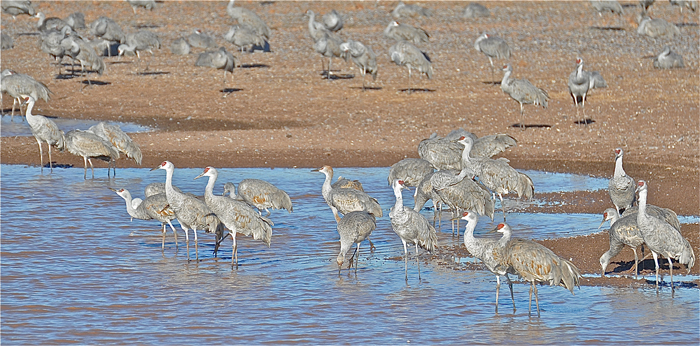
Migratory flocks of Sandhill Cranes overwinter along the shallow waterways of the southern United States and northern Mexico. The photo above shows a typical migratory flock of Greater Sandhill Cranes spending a late winter afternoon forging and preening in the shallow waters of the Willcox Playa in southeastern Arizona.
A daily trek
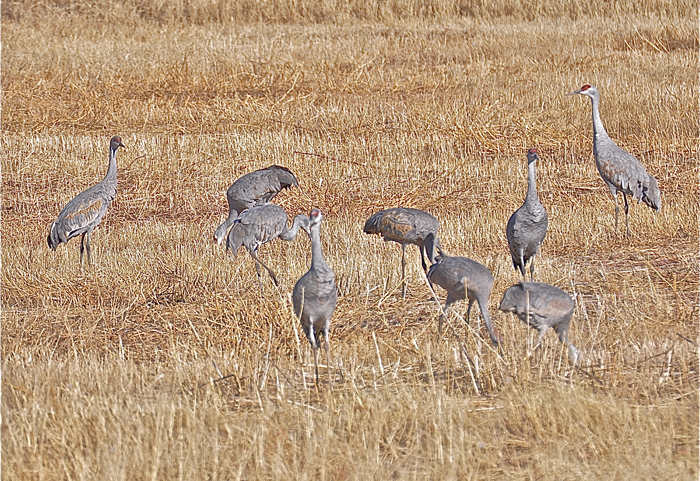
At dawn, thousands of Greater Sandhill Cranes will leave the shallow waterways and fly 50 to 100 miles (80 to 160 kilometers) to already harvested grain fields where they will spend the day searching the ground for fallen seeds. By early afternoon they retrace their journey and return to the safety of the shallow playa waters to roost.
Sign up for the Live Science daily newsletter now
Get the world’s most fascinating discoveries delivered straight to your inbox.
Together forever
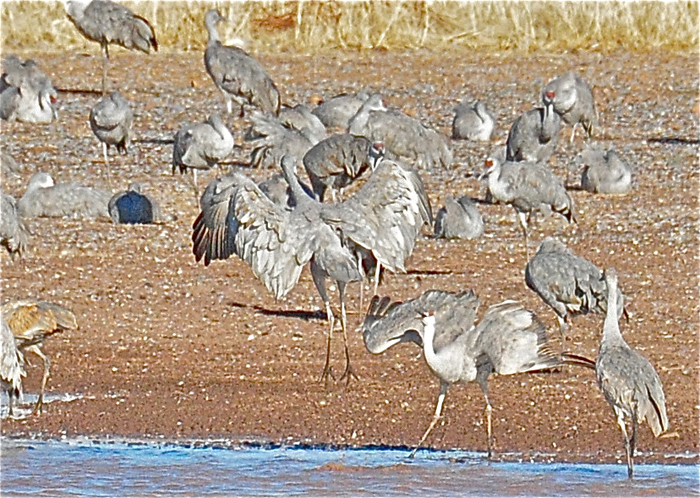
Sandhill Cranes mate for life. Both males and females will engage in unison calling, a series of complex and coordinated calls. During mating season, the pair will sing loudly and together in unison. They also engage in an activity known as dancing, which could include jumping, bowing, stick tossing and wing flapping. Dancing behaviors increase during the spring courting season but also occur year-round, strengthening the pairs' bonds.
Great recyclers

Sandhill Cranes build their nests on the ground out of whatever vegetative materials are available. The male actively participates in the nest building and becomes a protective guardian. Nest size ranges from 30 to 40 inches (75 to 100 cm) across and 4 to 6 inches (10 to 15 cm) high. Two eggs are normally produced and both parents take turns sitting on the eggs during the one-month-long incubation period. Once the chicks, also called colts, hatch, they take about two months of care before they become independent. When fall arrives, the juvenile Sandhill Crane will take wing and migrate with their parents. Full adult plumage for a chick will develop after 2.5 years.
A prehistoric creature
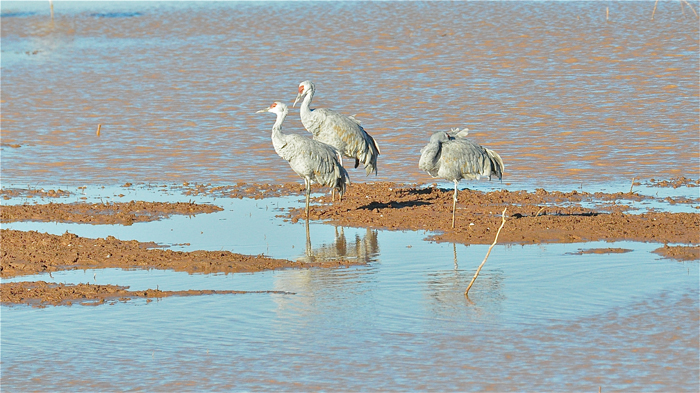
There is some evidence that the Sandhill Crane is the oldest known bird species on Earth. A crane fossil found along the Platte River in Nebraska is estimated to be some 10 million years old and identical in structure to the modern Sandhill Crane.
Disappearing habitat
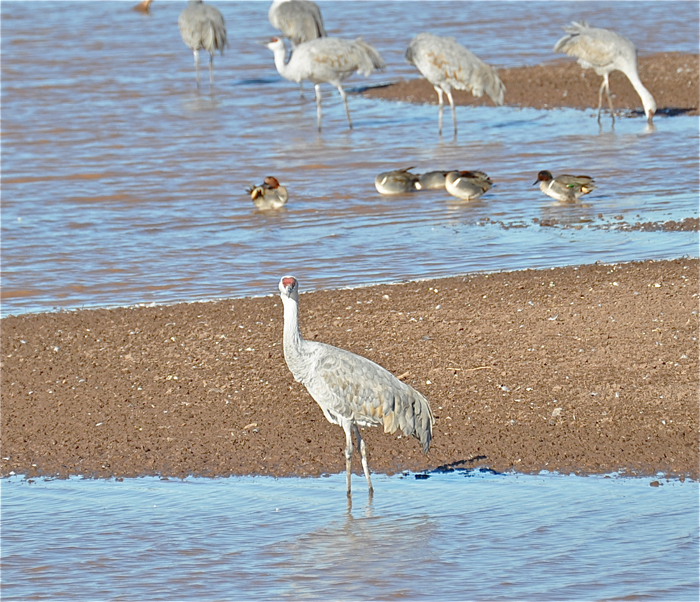
Sandhill Cranes' survival depends upon the open freshwater wetlands. The breakdown and disappearance of such freshwater wetland environments is the primary threat to their survival. Their populations today seem to be not only stable but also actually growing. Yet habitat preservation is concern and battle every year. There are 15 crane species found across the world and today the Sandhill Cranes are the most wide-ranging and numerous.










